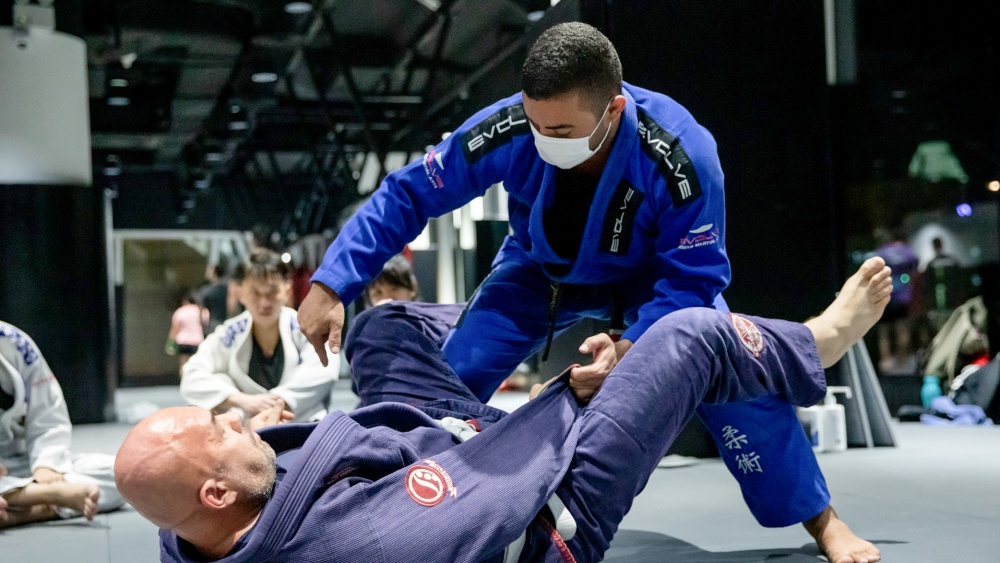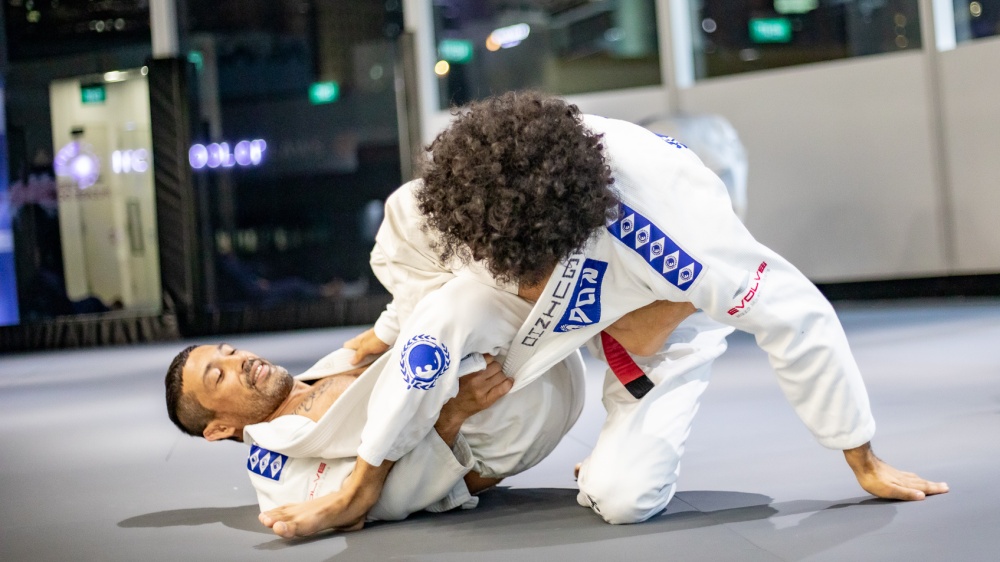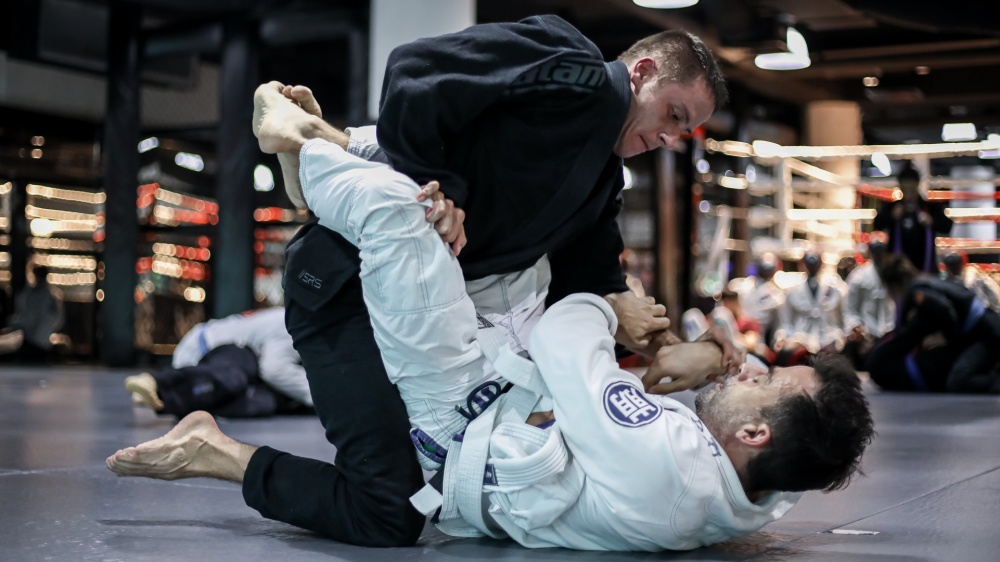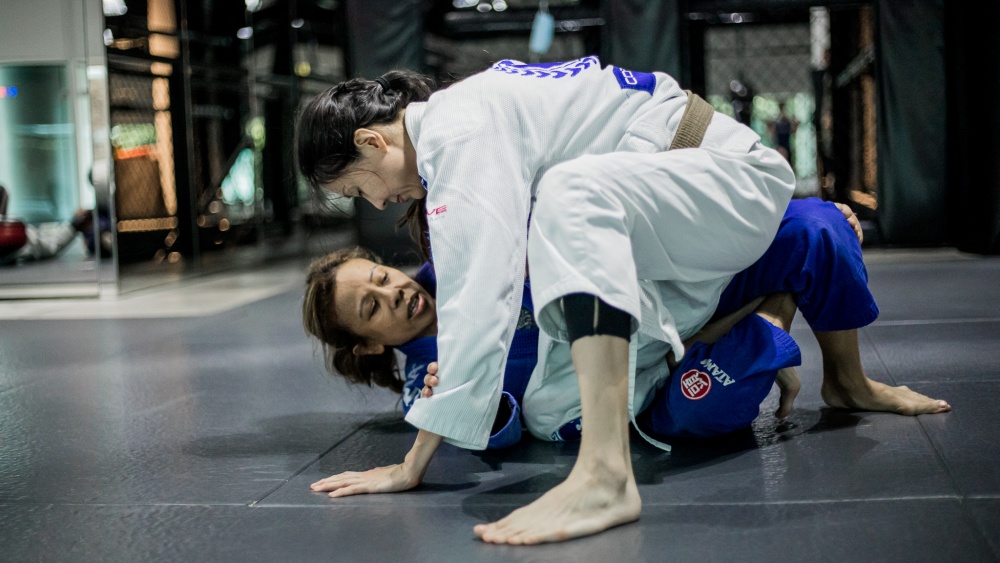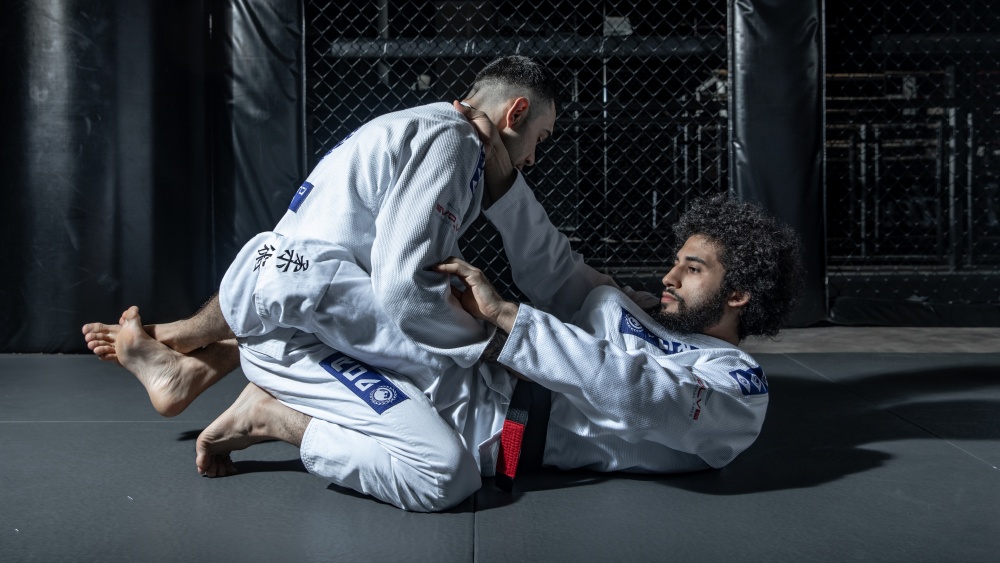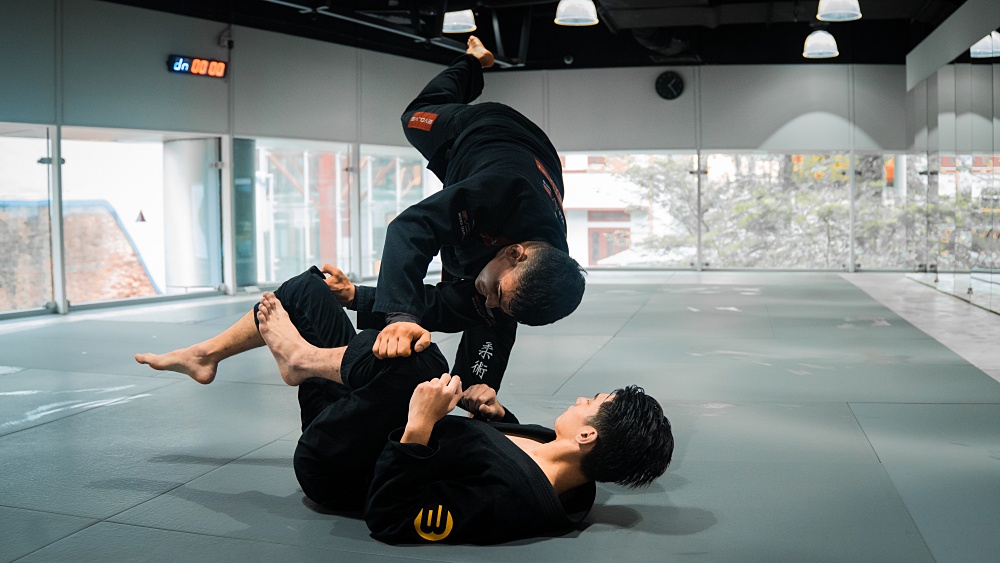Guard passing is one of the most essential transitions in Brazilian Jiu-Jitsu. It is so important that you cannot progress in the art without knowing how to pass someone’s guard. Guard passing refers to getting past your opponent’s knees when he is playing guard, and establishing a more dominant position—most commonly, side-mount—and holding that position for three to five seconds.
As you progress in Brazilian Jiu-Jitsu and compete with more experienced opponents that have more advanced guard retention capabilities, guard passing becomes a bit more complex. It is not just about opening someone’s closed guard and going straight to side-mount anymore, as there are other open guard positions you must contend with, such as the de la Riva, butterfly and spider guard.
This article shares some tips on improving your BJJ guard passing skills.
1) Have A Good Grasp Of Basic Positions
A lot of practitioners, both beginners and advanced, often neglect honing their fundamental basic positions (mount, side-control, rear-mount) in favor of more advanced guard and guard passing techniques. Having a good guard pass means nothing if you cannot maintain the dominant position. Imagine working so hard to open your opponent’s guard, passing, and establishing side-control, only to have your opponent re-acquire his guard a few seconds later—no points earned as you were not able to hold the position.
Spend more time doing positional spars and learn to maintain these basic positions, and when you find that you can hold these positions with as little energy as possible, you will notice your guard passing exponentially improve.
The next three tips are all connected to the closed guard.
2) Have At Least Two Go-To Methods To Open The Closed Guard
Guard passing is about variety. There is no “one-pass-fits-all” technique. In the case of opening the closed guard, more often than not, your opponent will be adept in handling the technique you are using. Adding another technique to open the closed guard will help immensely in your passing game.
3) Posture Up – The Right Way
https://www.youtube.com/watch?v=UWZDfpb5aU0
When you have good posture in the close guard, your opponent’s options are severely limited. Most basic setups for armbars, pendulum sweeps, kimuras, triangles, and so much more, are basically nullified if you keep your posture up. You do have to watch out for some kimura sweeps and other attacks that require your opponent to open their guard, but these attacks are easier to counter if your reaction time is fast, and, your reaction time will be faster if you have fewer attacks to worry about.
When posturing up, it is advisable to push on your opponent’s chest, rather than using your lower or mid-back muscles to prop yourself up. Using fewer muscles equates to less energy spent. Pushing on the chest with one or both hands and locking out your elbow ensures that you are not over-activating your spinal erectors and lower back, which should equate to less wasted energy. Locking your elbow when pushing on the chest minimizes tricep activation, which again translates to less energy spent.
4) Open The Closed Guard Efficiently
One of the first kneeling closed-guard opening passes taught in Brazilian Jiu-Jitsu is for you to push on the chest with one hand, and push on the knee with the other, while having one knee elevating the opponent’s back. If you look for closed-guard opening techniques online, this is probably the most common technique you will find. It seems easy enough and looks practical, but when most practitioners try this pass for the first few times, they get tired really easily and have their posture broken. Why? Because this is a pass where you have to grind a little, especially if your opponent is a little on the strong side.
Remember: getting into a guard-opening position does not mean that you have to open the guard right away. You can hold the position for a while, put pressure on the opponent’s hips by framing on the knee, and get their legs tired. This not only goes for this specific technique, but for a lot of other guard-opening moves as well. The lactic acid build-up in their legs will cause the guard to weaken and eventually open. Take your time, and don’t give up if a technique takes too long to execute. Expend less energy by using frames.
Once you open the close guard, do not let your opponent close it again. Setup your grips to pass right away, or, if the opponent is really strong and is pulling really hard on your collar, bring one knee up and wedge it between your opponent’s legs to prevent them from closing the guard again.
5) Strip Grips And Control The Hips
There is a saying- “Jiu-Jitsu is all about grips and hips”, and this holds true especially if you are playing bottom guard. Having good grips and excellent hip movement will make you a formidable guard player. Thus, if you are passing guard, you should, in turn, manage your opponent’s grips and hip movement. Do not let them establish grips before you do. If you see your opponent reach for your collar, push their hand away as soon as possible. If they are able to grab your collar, strip that grip as hard as you can.
In a perfect world, we would all be able to establish grips before our opponents, but there will always be times when your opponent will get a grip on you that you won’t be able to break. And when that happens, you either push through with your guard pass or look for angles where their grips will not be a factor.
For example, a cross collar grip is less effective against a leg drag, as your hips will be near the opponent. Their hips will be facing away from you, but your upper body has enough room that the collar grip will not be a major factor.
6) Have A Universal Guard Pass And Position-Specific Passes
You need to have a few passing techniques that are non-guard specific, meaning that these movements will allow you to go into a passing position as soon as you strip your opponent’s grips. Examples of these are over-under or bulldozer passes, double under or stack passes, and the knee slice. You can get into these passes as soon as you open your opponent’s guard, or as soon as you strip their grips.
Aside from using passes that work for most guard structures, you need to learn guard-specific passes. These are passes you can do if you cannot strip the opponent’s grip on you. For example, a long step pass from reverse de la Riva guard, or a modified toreando pass from spider guard – Leandro Lo’s favorite pass.
You will need to learn most of these position-specific passes and counters as you get exposed to more opponents playing different kinds of guards. Truly, this is where the fun in the guard passing game lies.
7) Manage Your Distance
Some practitioners miss beautifully timed passes because of poor distance management. Doing a toreando pass with your legs too far from your opponent will result in an easy hip escape and guard recovery. Pressing on too far forward inside an opponent’s spider-guard will result in an overhead sweep as they transfer your center of gravity above their head.
Proper distance management is key to successfully finishing a pass and countering your opponent’s attacks. Pay attention to the shift in your center of gravity and if you find that a certain pass isn’t working, try to make small adjustments in the distance of your feet, hips and knees in relation to your opponent’s hip area.
8) Staging Areas
When you are passing an opponent of equal skill, guard passes will not come so easily, especially with flexible opponents that have very good guard recovery skills.
Staging areas are passing positions where you go to rest, and where the opponent has to expend energy. You may have experienced passing a very skilled opponent where every attempt at an attack you do seems to get countered. Going into specific positions that have them expend energy while you regain energy is key.
A good example of this is the knee slice position. If you find yourself tired from an unsuccessful series of passes, do not stay in the middle of your opponent’s guard where he may be able to set up grips, or even pull you into their close guard. You can go into a knee slice position, and from the knee slice, do not attempt to finish the pass. Stay in that position as the opponent will not be able to establish guard, and you will be able to pressure them without expending too much energy. Once the opponent is tired from trying to recover, simply finish the pass.
A few other examples of this are the over and under/stack pass and side smash positions. You can stay in these passing positions, apply a lot of pressure, and the opponent will be forced to spend a lot more energy than you. Basically, when you need to rest, stay in a staging area to limit your opponent from setting up any form of guard structure.
9) Chain Your Passes
Passing guard is unlike playing bottom guard. There are definitely more move sets when playing bottom guard. The sheer amount of guard structures, sweeps and submissions make it one of the most dynamic positions in Jiu-Jitsu. But in bottom guard, you can succeed by honing a handful of techniques and executing them perfectly. Watch some high-level Jiu-Jitsu, and you will notice that most players have only a few signature sweeps and submissions from guard.
The top game is entirely different. Playing the top game definitely has a lesser number of move sets when compared to playing guard, but unlike playing guard, you will need to know most of the techniques when playing on top. You need to be able to structure your passing, and connect a specific technique to another.
If you pass using a toreando and the opponent recovers by shrimping, it would be a bad idea to reset in a neutral position where he can get back to closed guard. You will need to likely go from a toreando to a smash pass. When he counters the smash pass by shrimping again, you may need to go into a stack pass or a leg drag. You will need to chain specific techniques in relation to what your opponent is doing.
Start off with two passing techniques that you like doing, and add further techniques through your Jiu-Jitsu journey. Learn how these moves work together and in relation to each other, and you will be able to chain your passes in no time.
10) Gravity Is Your Friend
Always apply pressure whenever you can, and prioritize pressure over speed. While speed will also be a factor when passing someone’s guard, pressure is the name of the game. Remember, gravity is working for you and it is working against your opponent.
Conclusion
For those who are in the early and intermediate stages of their Jiu-Jitsu journey, the best way to get better in Jiu-Jitsu, is to practice Jiu-Jitsu! OSS!
You may also like:
Guard Passers vs Guard Players: A Guide To Picking Your BJJ Style
